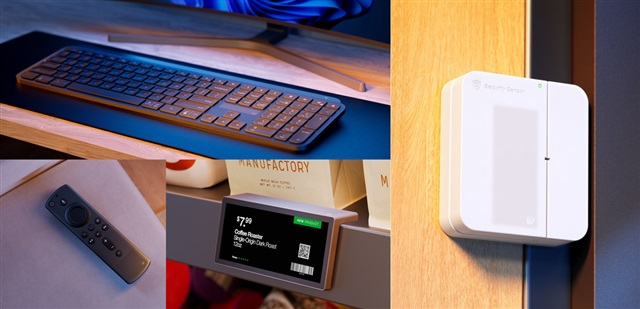The battery-powered electronics products are everywhere. But there have raised economic and ecological concerns. The carbon footprint and environmental impact of emerging contaminants from battery waste in consumer electronics have become the barrier to achieving the ESG targets for global brands and the supply chain partners. As the unmatched leader of the global semiconductor industry and electronics manufacturing services, Taiwan OEM/ODM vendors compete on the world stage are tackling these challenges by looking for tech innovations and sustainability solutions. The basic requirements are addressing to reduce carbon emissions, battery charging anxiety and operational costs of swapping batteries.
Ambient Photonics, located in Scotts Valley, California, addresses the growing environmental impact of disposable batteries. The company introduces high power density photovoltaic (PV) solar cells using low-light indoor energy harvesting technology to enable electronics device manufacturers to reduce the carbon footprint of their products by eliminating disposable batteries. This indoor-powered solar cell also equipped with design flexibility for optimizing the product features for electronics devices.
Different with a traditional rooftop solar power system, or PV system, Ambient Photonics implements an industrial printing technology to form a thin-film coating on a glass substrate with patented materials and industrial chemistry, described by Bates Marshall, the cofounder and CEO of Ambient Photonics. This technology is a new generation of Dye-Sensitized Solar Cell (DSSC) and provides two major advantages. One is the optimization of solar power density, and the second, the cost effective scaling manufacturing. The company has started to certify the high-volume, fully-automated mass production lines and get ready for scaling up manufacturing in Q3 2023 in its new factory Fab 1, located in Scotts Valley.
For the commercial products of the company, the indoor PV solar cells have generated 15.6 micro Watt per square centimeter under indoor light illuminance of 200 lux when applying standardized PV power measurement in industry. This power density specification has 3.5 times higher than the competitors. And the open voltage of the product is approaching 1 volt, which is 2.5 times higher than others. These best-in-class features transform indoor light into energy with three times more power density than conventional technology, Marshall highlighted.
Looking at the outlooks of the PV solar cell of the company, there is a uniform black color glass substrate without any metal grid patterns like traditional PV cells. The customized cutting dimension of the PV solar cell is ranging from 3.25 to 75 centimeters (CM) with the thickness of 2.2 millimeters. Furthermore, these solar cells may take varying shapes instead of a rectangular or square forms depending on the best-fit with the industrial design of user's electronics devices. Marshall noted that there is a high degree of flexibility for customization.
Apart from the offerings of application development Kit (ADK) to help electronics companies integrate the PV solar cell into their devices, Ambient Photonics set one sales office in Taipei with engineering support to provide integrated services to Taiwan OEM/ODM partners. Meanwhile, the target applications are aiming the consumer electronics devices of Internet of Things, industrial sensing and smart retail applications. The major listings of end products include remote control, computer keyboards, mice and smart electronic shelf labels in the retail stores. The electronic device manufacturers engage partnership with Ambient Photonics considering not only to improve product sustainability but also reduce operation costs from their special business needs. Things like hotel smart door lock solutions could save money and time for changing batteries while integrated with indoor PV solar cells. There are more advanced applications to be found in the future.
Considering the intense competition in electronics market sectors and with growing numbers of enterprises joining international climate advocacy initiatives, corporate leaders have come to recognize that carbon reduction is now critical to competitiveness. Taiwan electronics manufacturing services and OEM/ODMs realize that low-carbon production will be essential to their future. The electronic supply chains are at the forefront of sustainability, Marshall highlighted. He will visit Computex 2023 to gather further opportunities with Taiwan electronics partners.
To learn more about indoor PV solar cell innovation and energy harvesting for connected devices, please logon Ambient Technology website here:
https://ambientphotonics.com/technology

API PV cell applications
